Welcome to the ultimate guide to starlings! Whether you’re a bird enthusiast or simply curious about these common creatures, this comprehensive guide has got you covered.
From their interesting habits and behaviors to their role in our ecosystem, we’ll dive deep into everything you need to know about starlings.
If you find yourself intrigued by these birds but unsure of where to start, fear not. This guide will provide all the information you need in an organized and easy-to-digest format. So let’s not waste any more time and jump right into it!
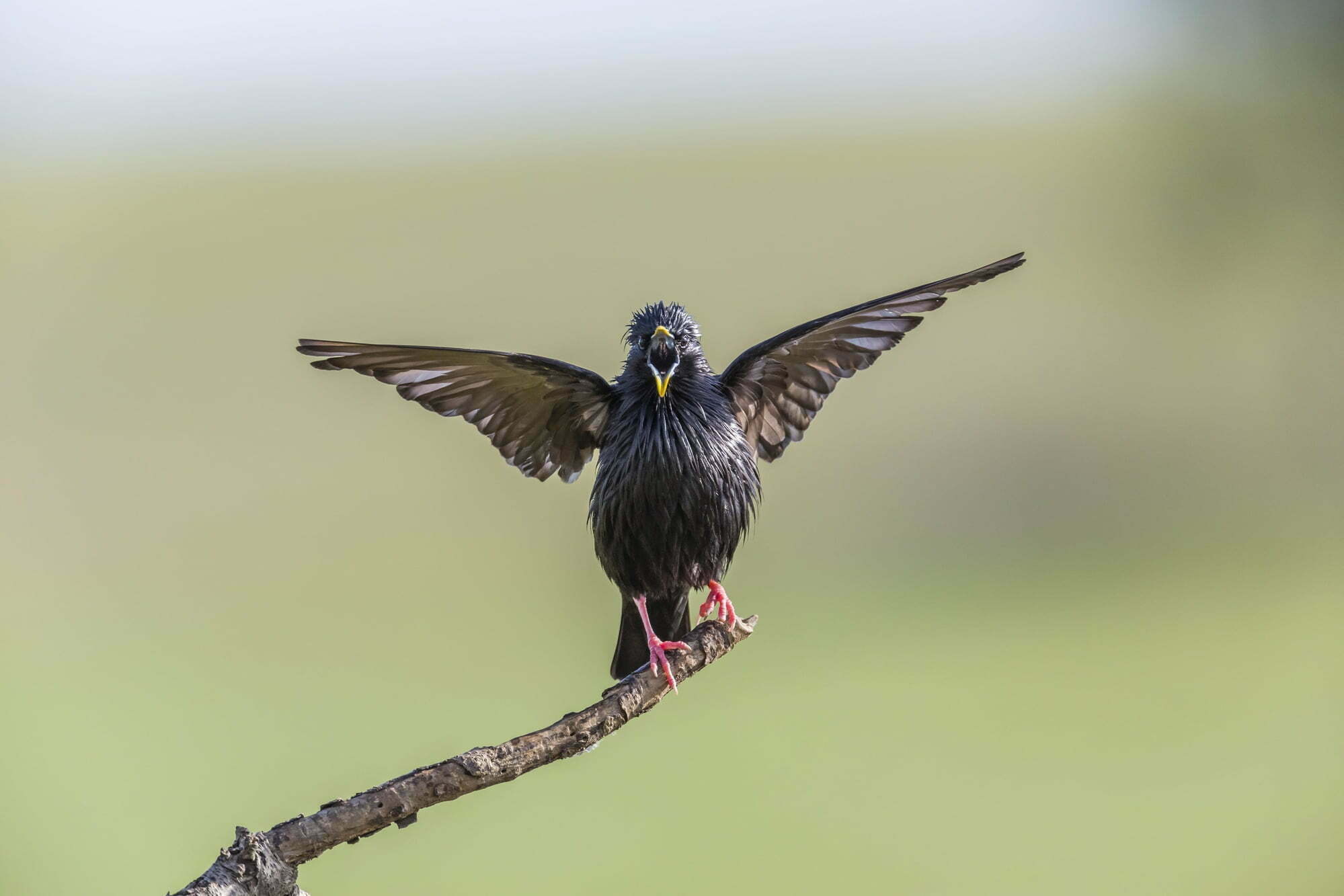
What Are Starlings, and Where Do They Come From?
Starlings are a group of small to medium-sized birds belonging to the Sturnidae family. Your recognition of these birds comes from their distinctive shiny feathers and chirpy songs.
With over 60 species, you’ll find starlings on almost every continent, showcasing their adaptability and widespread nature.
In particular, the common starling—Sturnus vulgaris—originates from Europe, parts of the Middle East, Central Asia, and North Africa. Let’s quickly break down their habitat distribution:
- Europe: The birthplace of the common starling.
- Asia & Africa: Native regions with various species.
- North America: European starlings were introduced in the 19th century.
European starlings spread to North America when released in New York in the 1890s and have since flourished across the continent, mingling with local bird populations and establishing themselves firmly in various ecosystems.
Size & Features of Common Starlings:
- Size: Range from 16.5 to 42 cm long.
- Features: Notable for their iridescent plumage and pointed wings.
The species demonstrate remarkable versatility in habitat selection, thriving in cities and rural areas alike.
If you’ve witnessed the mesmerizing aerial displays known as murmurations, you’ve encountered the social and dynamic nature of these birds, especially during their non-breeding season.
Such spectacles highlight one of the many fascinating behaviors of starlings that have captured human interest throughout history.
What Do Starlings Look Like, and What Are Their Habits?
Starlings are medium-sized passerine birds with a distinctive appearance. You can identify them by their short, squared tails and triangular wings.
During the summer, their feathers exhibit an iridescent sheen, which can include hues of green and purple, that captures the light in different angles. In contrast, their winter plumage is generally duller with white spots.
Behavior & Patterns:
- Murmurations: One of the most breathtaking behaviors you may observe is the starling murmuration, where large groups of starlings fly in mesmerizing, coordinated patterns.
- Feeding: In your garden, starlings are versatile eaters; their diet includes insects, fruits, and seeds.
Nesting & Roosting:
- Starlings are social creatures, often nesting in close quarters and engaging in communal roosting, where they gather in large numbers for warmth and protection.
Vocalizations:
- Known for their noisy demeanor, starlings are also gifted mimics. They can imitate a variety of sounds, from other bird species to human speech.
Starlings adapt easily to various environments, and you may often encounter them in both urban and rural settings. Their adaptability and social nature make them a common and recognizable presence across their range.
What Do Starlings Eat?
Starlings exhibit omnivorous feeding habits, thriving on a varied diet that supports their energetic lifestyle. Your starling’s diet would include a mix of insects, fruits, and seeds, providing a balanced intake of nutrients.
Insects
A significant part of a starling’s diet is made up of insects. Protein-rich invertebrates such as mealworms, beetles, worms, grasshoppers, and caterpillars are favored by these birds. During breeding season, they rely heavily on these protein sources to feed their young.
Fruits and Berries
Starlings also consume a variety of fruits and berries, which supply them with essential vitamins. They are particularly fond of:
- Apples
- Grapes
- Berries of all types
These natural sugars support their energy needs throughout the day.
Seeds and Grains
Although less preferred, starlings do incorporate seeds and grains into their diet. This aspect of their diet becomes more prominent when insect populations are low, particularly in urban settings.
Additional Food Sources
- Nuts: Occasionally consumed, nuts offer healthy fats.
- Scraps: In urban areas, starlings may scavenge for human scraps, but natural foods are healthier for these birds.
Regular access to clean water for both drinking and bathing is crucial for maintaining your starling’s health. It’s important to replicate their natural diet as closely as possible, especially if you are caring for a starling in captivity.
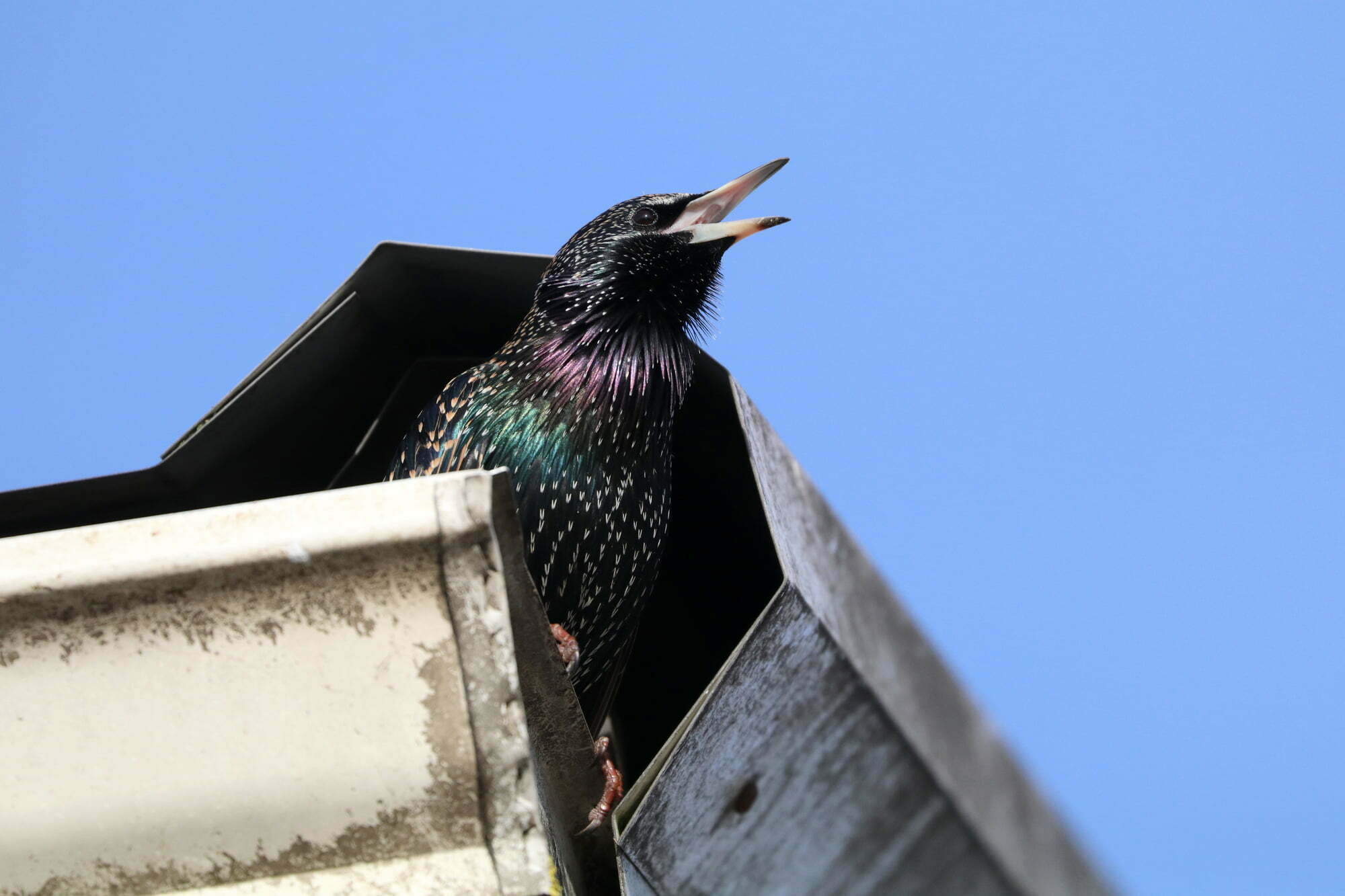
Breeding Habits Of Starlings
During the breeding season, which typically lasts from March to July, European Starlings engage in activities such as mating, nesting, and caring for their young.
You’ll find that starlings are quite adaptable when it comes to their nesting choices, often opting for natural cavities, nesting boxes, or even utilizing man-made structures to lay their eggs.
When creating a nest, starlings look for suitable locations that offer safety and proximity to food sources. Nests are often lined with grass, feathers, and other soft materials.
Here’s a quick overview of their breeding process:
- Nesting Period: 5-6 weeks
- Clutch Size: 3-7 eggs
- Egg Appearance: White or pale blue with brown spots
- Incubation: Approximately 2 weeks
Eggs are cared for primarily by the female, though males contribute as well. After hatching, both parents are involved in feeding the naked and blind chicks.
The chicks are ready to fledge at about three weeks old, a rapid development compared to some other bird species.
| Stage | Details |
|---|---|
| Hatching | Chicks emerge blind and naked. |
| Development | Rapid growth, aided by both parents. |
| Fledging | Occurs around 3 weeks after hatching. |
| Post-fledging | Parents may continue to feed young. |
Consider providing nesting boxes to support starling populations, as they’re known to utilize them happily.
These structures should mimic natural cavities in size and shape, with dimensions around 4 meters in length, 1 meter wide, and 2 meters high.
What Is the Habitat of A Starling?
Starlings are highly adaptable and thrive in various habitats. They have a remarkable ability to make themselves at home in diverse environments, ranging from natural to urban settings.
Your encounter with these birds may occur in several places.
In nature, starlings favor open grasslands intermixed with trees for nesting. They are ground-foragers, so areas with accessible soil and grass support their search for insects and invertebrates.
The presence of plants also provides them with fruits and seeds, an essential part of their diet. In these grasslands, starlings are also known to nest in cavities they find within trees.
You may also observe starlings in your backyard, as they are comfortable in urban areas. They adapt to these environments by making use of what’s available; for example, bird feeders become a source of sustenance.
Structures in your yard can act as substitutes for their natural nesting sites.
- Natural Habitat:
- Open grassland with trees
- Ground level for foraging
- Availability of plants and fruits
- Urban Environments:
- Utilization of bird feeders
- Nesting in man-made structures
- Presence in backyards and parks
Starlings’ ability to live in both pristine and altered landscapes highlights their versatile nature. Your yard or nearby park, with its mix of trees, grass, and supplementary feeding options, may become a habitat for these birds.
Whether in rural or city life, starlings find a way to coexist with human-altered landscapes, confirming their reputation for being resilient and resourceful creatures.
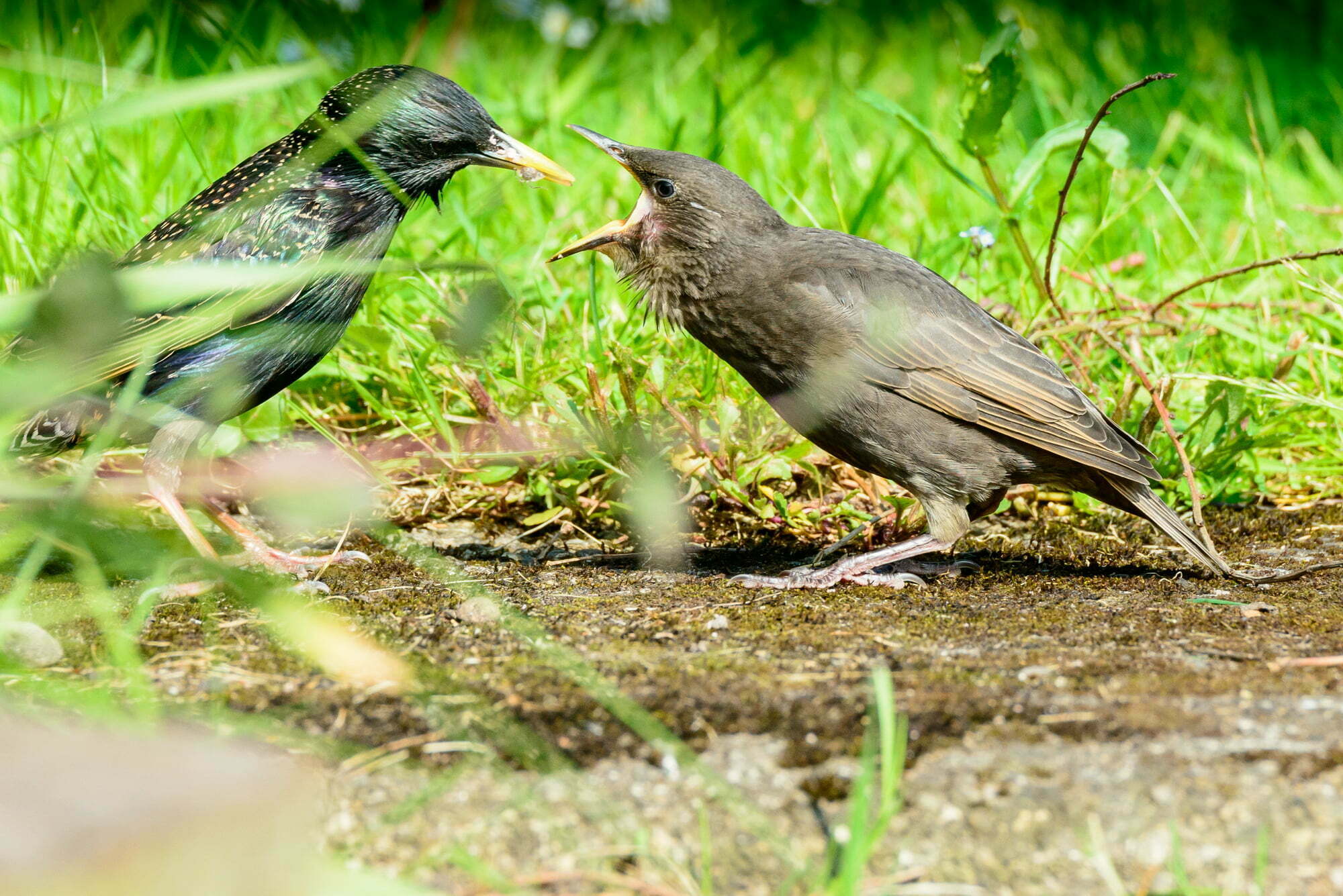
How Can You Identify a Starling?
Identifying a starling is straightforward once you are familiar with their key characteristics. When you are observing these birds, look for the following features:
- Size and Shape: Starlings are small to medium-sized birds that are stocky and robust with a short tail. They have a straight, sharp-pointed bill and their wings are triangular in shape during flight.
- Plumage: During the breeding season, starlings sport an iridescent sheen; black feathers with purplish, green, and blue hues are common. Non-breeding adults and juveniles have a duller brown plumage with white spots.
- Patterns: Starlings exhibit distinctive seasonal changes. In winter, the feathers are tipped with white, giving a speckled appearance. As the plumage wears, the white tips diminish, and by summer, the birds appear mostly glossy and spotted.
- Bill: The bill color changes with the seasons. During the breeding season, starlings’ bills are bright yellow, making them easy to distinguish from other species, while in the winter, their bills turn darker.
- Murmurations: One of the most spectacular behaviors of starlings is their murmurations. If you see a large, fluid group of birds twisting and turning in the sky at dusk, you are likely witnessing a starling murmuration. This phenomenon is not only a way to recognize starlings but also a breathtaking natural event to observe.
What Is the Wingspan & Lifespan Of A Starling?
Starlings are medium-sized birds that exhibit a remarkable range in both wingspan and lifespan, reflecting their ability to adapt to diverse environments which affects their health and well-being.
Wingspan:
- Adult starlings have a wingspan that typically ranges from 31 to 44 centimeters.
- This feature facilitates their agile flight and ability to maneuver through various landscapes, from open fields to bustling urban settings.
Lifespan:
- On average, your starling can be expected to live 2 to 5 years in the wild.
- Starlings are known to have reached ages well beyond the average under particularly favorable conditions, with the oldest recorded individual in Denmark living nearly 23 years.
- Key factors influencing a starling’s lifespan include habitat quality, access to food, predation risks, and disease exposure.
Table of Health and Well-being Influencers:
| Factor | Impact on Lifespan |
|---|---|
| Habitat | Affects access to food and shelter. |
| Competition | May reduce lifespan due to stress. |
| Predation | High risk can lead to shorter lives. |
| Disease | Can significantly impact longevity. |

What Are the Predators of A Starling?
Your interest in wildlife, particularly in the interaction of starlings with their predators, uncovers an array of animals that pose a threat to these blackbirds. Predators of starlings primarily consist of:
- Birds of Prey: Raptors such as falcons and hawks frequently target starlings, particularly during flight or when starlings are vulnerable in open spaces.
- Owls: The nocturnal hunters can surprise starlings at roost, exploiting the cover of darkness.
| Predator Type | Examples | Hunting Technique |
|---|---|---|
| Birds of Prey | Falcons, Hawks | Aerial attacks, often in open areas |
| Owls | Great Horned Owls | Stealth attacks at night at roost sites |
Beyond birds of prey, your awareness of the terrestrial threats completes the picture:
- Mammals: Starlings must be wary of mammals like foxes and domestic cats when on the ground or nesting low in trees.
- Snakes: These reptiles can infiltrate nests to consume eggs and fledglings.
Nesting sites also draw other opportunistic feeders. While starlings vigorously defend their nests, predators such as larger birds, including some other blackbird species, may attack nests for both territory and food.
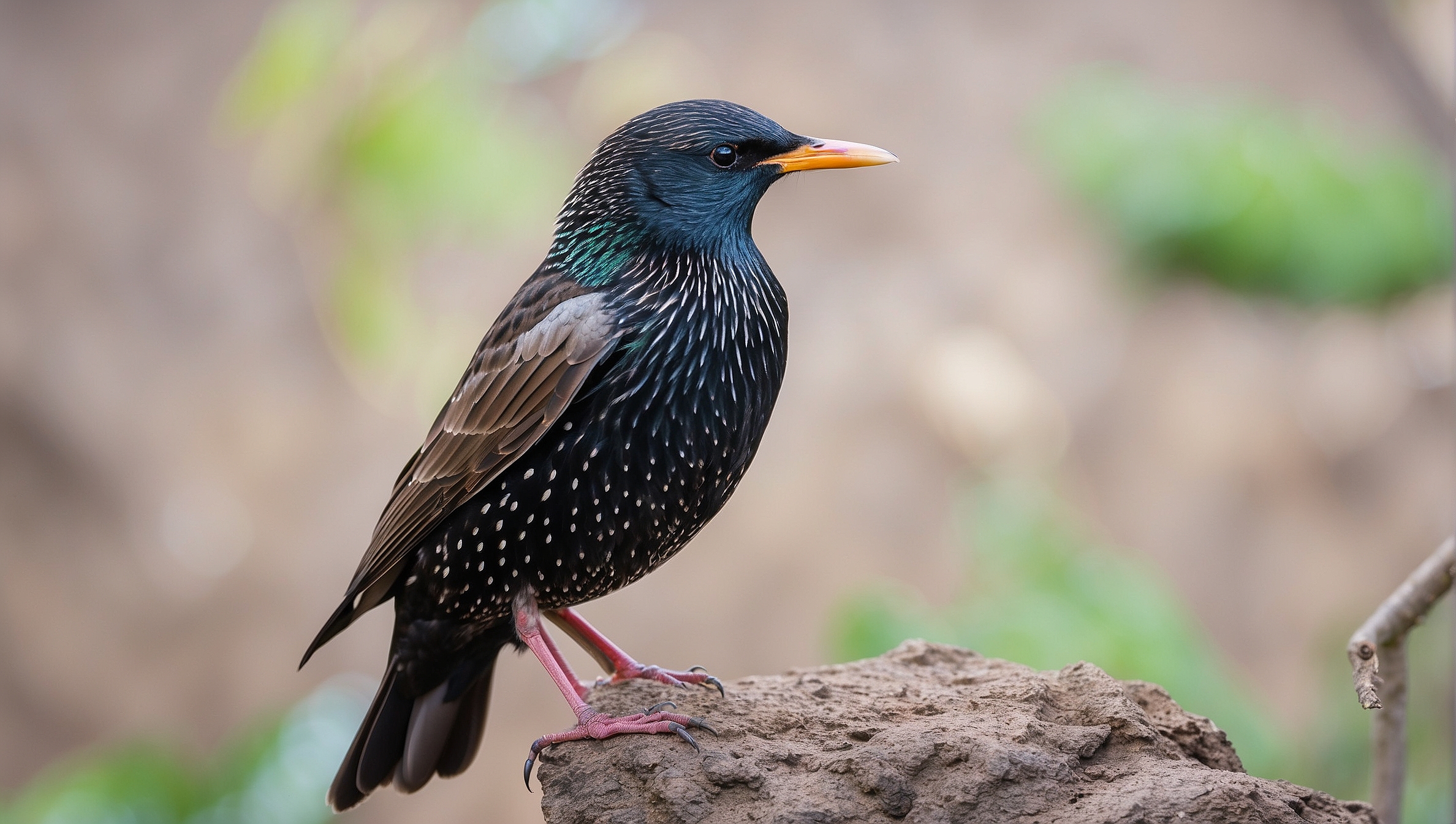
What Is The Collective Name For A Group Of Starlings?
A group of starlings is called a “murmuration”.
Do Starlings Migrate?
European starlings (Sturnus vulgaris), specifically, demonstrate varying migratory behavior depending on their location.
In regions experiencing severe winters, you’ll find that European starlings migrate to avoid the harsh conditions. They typically move southward as the cold sets in, seeking out more moderate climates.
During this time, your chances of spotting them in warmer areas increase.
However, it is crucial to note that not all starlings migrate. Those living closer to the equator or in areas with milder winter conditions tend to stay put throughout the year.
Their adaptability to local environments eliminates the need for the arduous journey that is migration.
When considering migratory patterns, it’s also interesting to observe that some starlings follow food sources. These include herds or insects that are on the move, ensuring a consistent food supply during their travels.
| Resident Status | Description |
|---|---|
| Non-Migratory Starlings | Remain in the same area year-round, often near the equator. |
| Migratory European Starlings | Seasonally relocate to escape extreme winter cold. |
Migration is neither uniform across the starling species nor is it a simple ‘yes’ or ‘no’ answer. Their diverse family boasts many species with a spectrum of migratory tendencies.
Therefore, if you encounter a starling, consider your geographical location and the season to understand whether the starling in question is a migrant or a year-long resident.
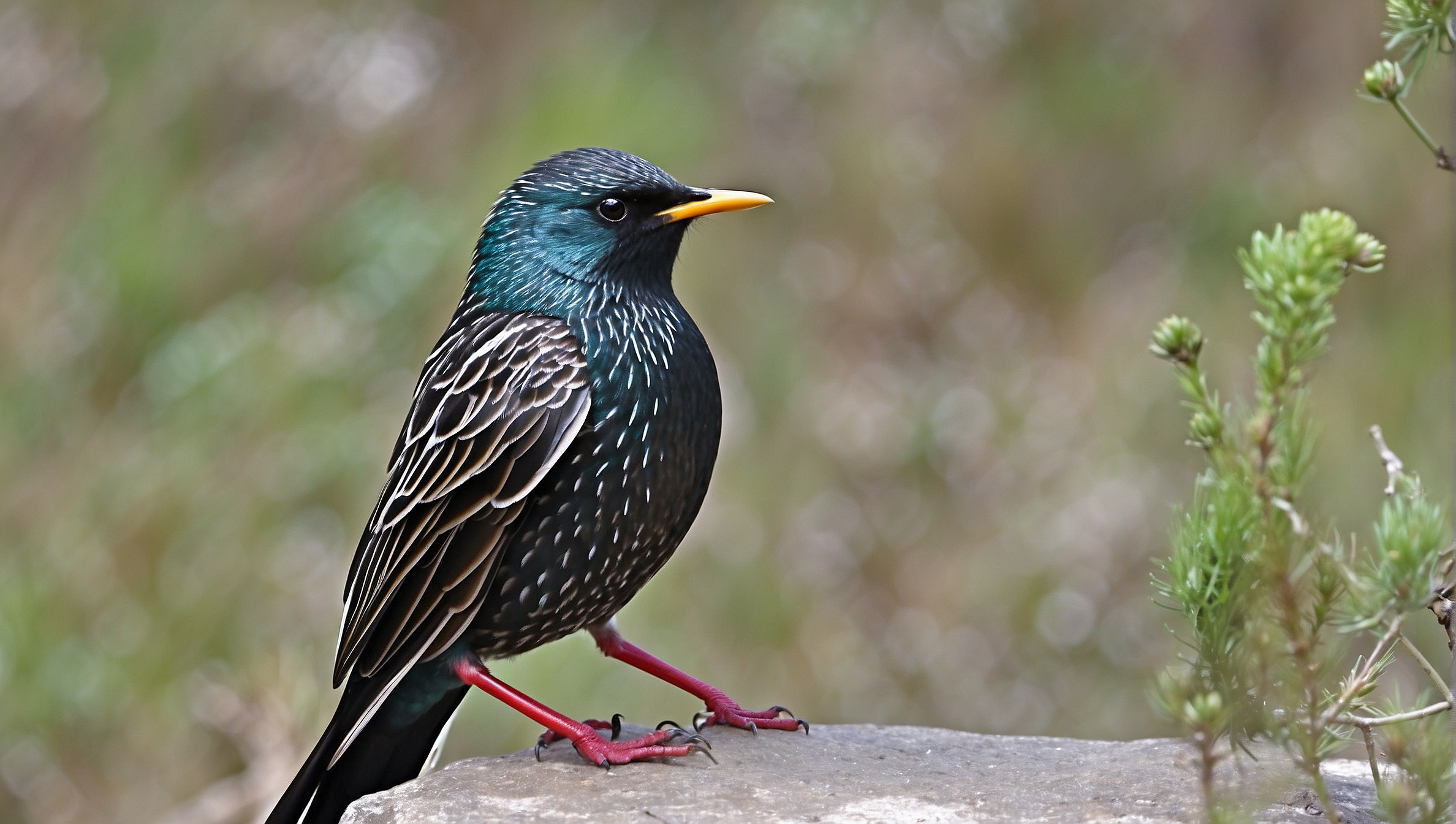
How Should You Approach An Injured Starling?
If you encounter an injured starling, it’s crucial to provide it with the help it needs while ensuring your safety and the bird’s well-being. Here’s a concise guide:
Safety First
- Protect Yourself: Starlings may carry diseases or parasites. Wear gloves before handling the bird.
- Remain Calm: Avoid stressing the starling; approach it gently and quietly.
Secure the Bird
- Containment: Place the bird in a container with ventilation, such as a cardboard box with air holes.
- Environment: Keep the container in a warm, dark, and quiet place to calm the bird.
Assess the Situation
- Observe Carefully: Look for signs of injury or distress without handling the bird excessively.
- No Food or Water: Do not attempt to feed or water the bird. Incorrect feeding can do harm.
Professional Care
- Contact Experts: Reach out to a local wildlife rehabilitator or animal rescue center for specialized care.
- Transport Safely: If instructed to transport, keep the bird secure in the container during the journey.
Handling a starling in captivity should always be done with mindfulness of the bird’s fragile state and your responsibility towards its recovery.
What Can You Do to Help Starlings?
If you want to help a starling, you can do a few things. First, you can help protect their habitat by planting trees or creating nesting boxes.
You can also avoid using pesticides in your yard, and you can put up bird feeders to provide food for these birds. Finally, you can support organizations that are working to conserve starlings and their habitat.

What Are the Threats to Starlings?
Starlings face numerous threats that contribute to their decline, primarily from human activities and environmental changes. Your understanding of these threats is crucial for their protection and the balance of ecosystems where they play a role.
- Habitat Loss: As you develop land for agriculture or urbanization, their nesting and foraging habitats diminish, leaving fewer places for starlings to live and breed.
- Pesticides: The usage of pesticides in farming can poison starlings indirectly by contaminating their food sources, including insects and fruits.
In their native range, such as the UK, starlings have experienced significant population declines. These birds, though sometimes considered aggressive due to their gregarious nature, are an essential part of the ecosystem, especially as pest controllers.
- Predators: Natural predators, such as birds of prey, can also impact starling populations. However, predation is a natural threat that starlings have co-evolved with.
Are Starlings A Pest?
Starlings exhibit several characteristics that can classify them as pests, particularly in urban environments and gardens. Here are key factors contributing to their pest status:
- Competition for Resources: Starlings are known for their aggressive behavior at bird feeders, often outcompeting native birds for food sources.
- Amplified Numbers: Their capacity to thrive in diverse environments has led to large populations. In urban settings, you may notice them foraging in groups, which can lead to substantial mess and noise.
- Impact on Ecosystem: Starlings can disrupt the balance of local ecosystems due to their energetic nature and adaptability.
- Garden Intrusion: In your garden, starlings might create nuisances. They are drawn to food spills and can uproot plants in search of insects.
Table: Starlings’ Impact on Gardens and Urban Areas
| Gardens | Urban Areas | |
|---|---|---|
| Impact | Plant damage, soil disruption | Noise, mess, displacing native birds |
| Attraction | Bird feeders, spilled food | Abundant food sources, shelter access |
| Control Measures | Secure food, scare tactics | Sanitation, structural modifications |
Despite these factors, starlings also have positive aspects; they are known for their stunning murmurations and are part of the ecosystem’s energy flow.
They were first famously introduced into Central Park by enthusiasts eager to bring all the birds mentioned in Shakespeare’s works to America.
